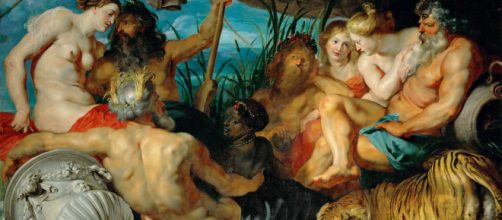Facebook's policy against nudity in advertising prevents postings for Peter Paul Rubens shows in Belgium museums and the Flemish Tourist Board isn't happy about it. An open letter to Mark Zuckerberg said, “your cultural censorship is making life rather difficult for us,” suggesting that revenue rather than Rubens is the main concern. In fact, the subject of art isn't mentioned. So let's fix that.
Living in the past
The Tourist Board has it wrong claiming that Rubens' art promises “an extraordinary number of followers” on Facebook. In the 17th century, maybe, but not now.
As recently as the last century no self-respecting art lover would collect Rubens. The turgid cherubs flying around his paintings aside, it's the way he rouged up flesh to make it appear - well, fleshier as if everyone in his pictures was flushed and churning with sexual arousal. Then there's his near-constant use of red coloring, his ever-swirling fabrics, thunderclouds and cliff-hanging trees. It's all so exhausting to look at and way too stagy for today's audiences.
Out of character
And here's the thing. Despite his flushed, fleshy figures, Rubens didn't use live models. He preferred to work from antique marble statuary and added dimples to more resemble skin than stone. All of which is particularly odd, since in one of his treatises on art, he cautioned painters against copying from statues.
Wait, there's more. Even though he pictured the buxom and the beefy, he was a fitness nut. Historian Roger de Piles reported in his 1681 tome “Dissertation sur les ouvres des plus fameux peintres” Rubens' “great dislike of excessive drinking or eating.” The artist's own writing on art also talked about physical fitness, saying that the chief difference between the ancients and his generation is the laziness and life without exercise of his contemporaries, and accounted for “our lower bellies, ever filled by a ceaseless voracity, bulging out over-loaded.”
Staying fit
Rubens practiced what he preached. De Piles noted that because the artist loved making art, he lived so that he could work without hindering his health.
“For that reason, he ate little at dinner, so that the vapors of what he ate should not prevent him from applying himself, and so that labor should not impede digestion.”
The reasons why
So why were Rubens' art so notably overblown when he clearly was such a realist? He had no choice if he wanted to make a living. This was the time of the Counter Reformation. Exaggeration, theatricality, particularly in religious art, served the Catholic Church's need to convert the illiterate masses from Protestantism. Painting was often the only source of Bible learning for a population that couldn‘t read. The vehemence and the worked up air of Rubens' pictures fit the bill. S*x sells after all.


